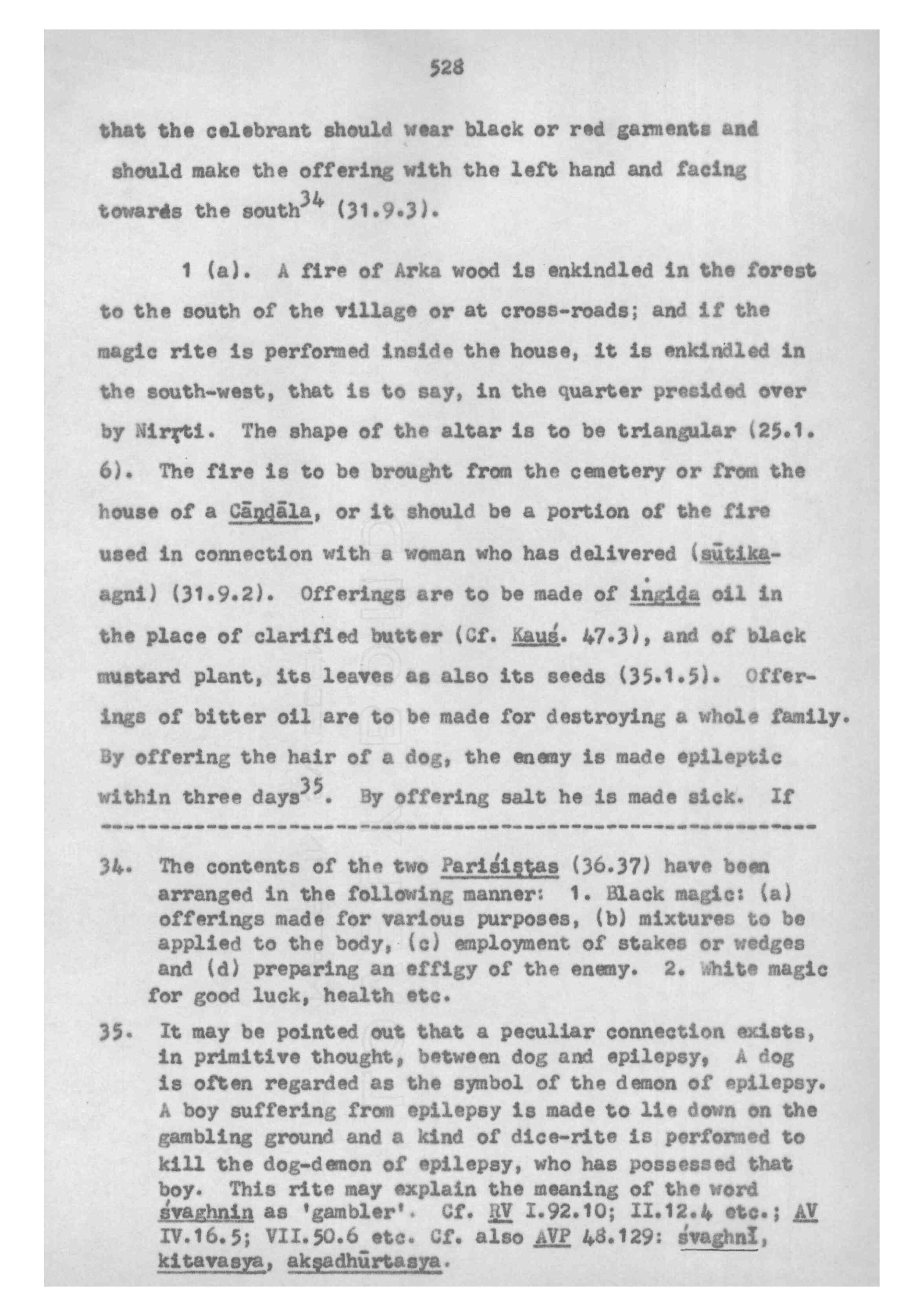Essay name: Atharvaveda ancillary literature (Study)
Author:
B. R. Modak
Affiliation: Savitribai Phule Pune University / Department of Sanskrit and Prakrit Languages
The essay studies the ancillary literature of the Atharva-Veda with special reference to the Parisistas. It does so by understanding the socio-cultural and philosophical aspects of ancient Indian life. The Atharvaveda addresses encompasses all practical aspects of life from health and prosperity to rituals and sorcery.
Chapter 2a - The nature of the Parisistas (of the Atharvaveda)
246 (of 459)
External source: Shodhganga (Repository of Indian theses)
Download the PDF file of the original publication
528
that the celebrant should wear black or red garments and
should make the offering with the left hand and facing
towards the south 34
(31.9.3).
1 (a). A fire of Arka wood is enkindled in the forest
to the south of the village or at cross-roads; and if the
magic rite is performed inside the house, it is enkindled in
the south-west, that is to say, in the quarter presided over
by Nirrti. The shape of the altar is to be triangular (25.1.
6). The fire is to be brought from the cemetery or from the
house of a Candala, or it should be a portion of the fire
used in connection with a woman who has delivered (sutika-
agni) (31.9.2). Offerings are to be made of ingida oil in
the place of clarified butter (Cf. Kaus. 47.3), and of black
mustard plant, its leaves as also its seeds (35.1.5). Offer-
ings of bitter oil are to be made for destroying a whole family.
By offering the hair of a dog, the enemy is made epileptic
within three days 35. By offering salt he is made sick. If
34. The contents of the two Parisistas (36.37) have been
arranged in the following manner: 1. Black magic: (a)
offerings made for various purposes, (b) mixtures to be
applied to the body, (c) employment of stakes or wedges
and (d) preparing an effigy of the enemy. 2. White magic
for good luck, health etc.
35. It may be pointed out that a peculiar connection exists,
in primitive thought, between dog and epilepsy, A dog
is often regarded as the symbol of the demon of epilepsy.
A boy suffering from epilepsy is made to lie down on the
gambling ground and a kind of dice-rite is performed to
kill the dog-demon of epilepsy, who has possessed that
boy. This rite may explain the meaning of the word
svaghnin as 'gambler'. Cf. RV I.92.10; II.12.4 etc.; AV
IV.16.5; VII.50.6 etc. Cf. also AVP 48.129: svaghni,
kitavasya, akṣadhūrtasya.
